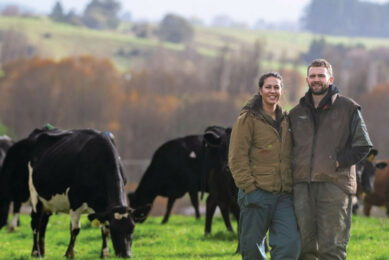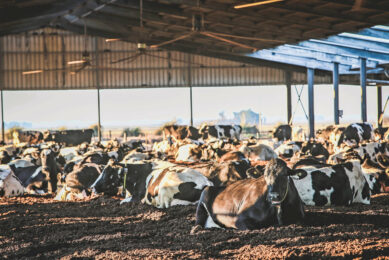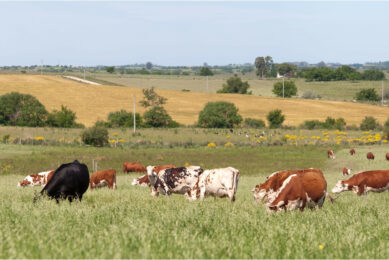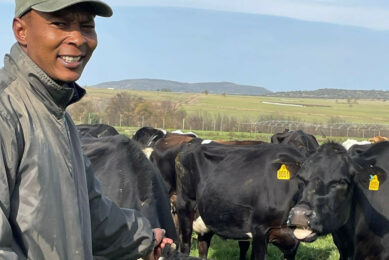Expanding a dairy farm in South Africa has its own challenges
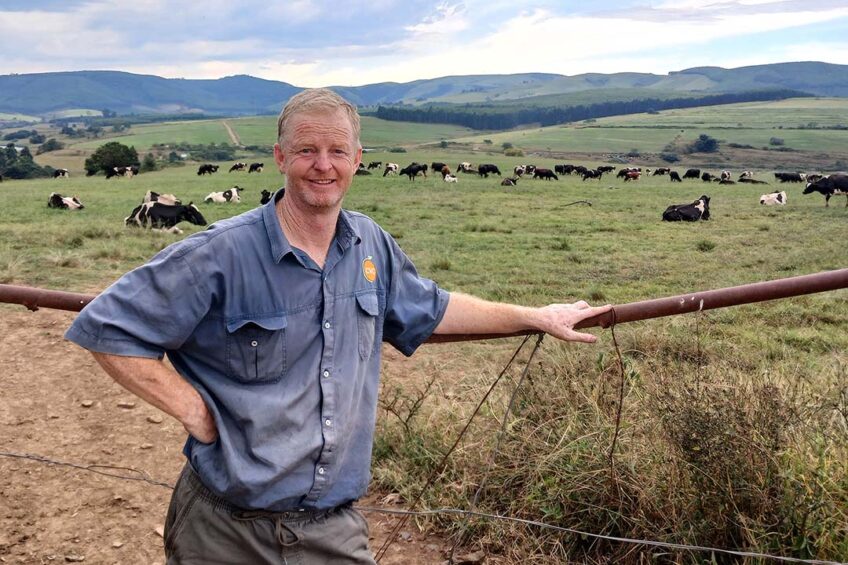
Expanding a dairy farm anywhere these days is met by a number of physical, financial and mental challenges, but for many farmers it is the only route to survival.
Dairying in South Africa comes with its own set of unique stumbling blocks that hinders the chance of growing dairy herds, but adopting a true grit attitude makes it possible.
Paul and Sarah Reynolds can trace their roots back to the British colonists, known as the 1820 Settlers, that started new lives mostly in the country’s Eastern Cape province. Together they run Olivar Farm near Ixopo District in southern KwaZulu-Natal, which extends to 917 hectares and is home to 350 cows, with a goal to expand to 600 cows.
The farmland comprises 110 ha of irrigated pasture for the dairy herd, 100 ha of arable land to grow maize for the cows, 45 ha of dryland Kikuyu pasture, 150 ha of forest for timber, 27 ha of citrus fruit orchards, some veld for grazing heifers and some leased to neighbours for beef animals.
Start of a dairy farm
“We are not exactly sure when the dairy started but it was around 1936,” says Paul. “There was a big hailstorm that year which hit the maize crop, so they built a cow shed for 60 cows to start the dairy off. We are currently milking 350 cows twice daily through our DeLaval 30 point swing over herringbone parlour. The cows are mainly Holstein Friesian breed but we do have a few Jerseys and Jersey crosses in the herd.”
The cows currently produce about 15 litres per cow as a year-round average, though Paul notes it has been as high as 20 litres per cow. “We calve cows all year round peaking in production through spring. Milk runs at 4% butterfat and 3.6% protein. All the milk is sold to processor Clover SA at around R7 per litre, or €0.34 per litre.”
All the cows on Paul’s farm are kept outdoors and fed mostly on pastures as there are no huge expensive cattle barns on his farm.
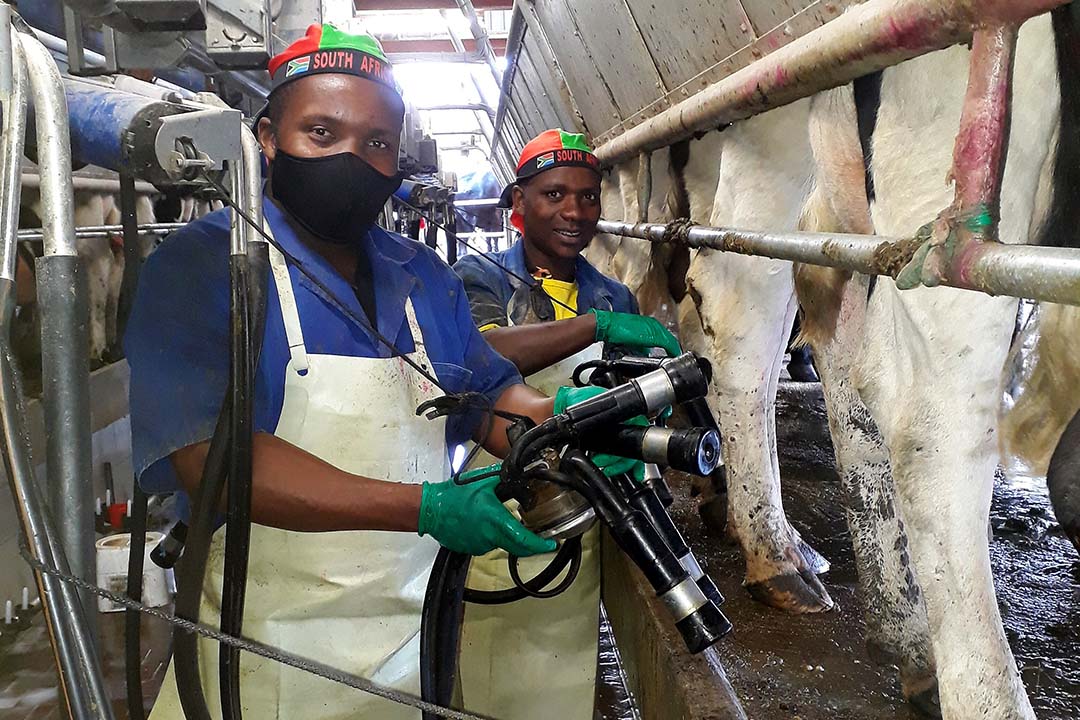
Grazing cows and pasture
Paul says that there are no sheds to accommodate cows indoors on the farm, and all animals are out on the pasture all the time. “We rotationally graze our irrigated platform with our milkers all year round.”
The milking herd is split into 2 milking groups. “The best cows in the A Herd graze first and the B Herd follows them,” says Paul. “We have a total of 300 follower heifers of various ages from calves to heifers in calf, and 30 to 50 dry cows. These graze on the dryland pastures and are fed silage in winter.”
Paul currently breeds the main herd for butterfat, but not at the expense of milk quantity, with longevity and health indexes also being important.
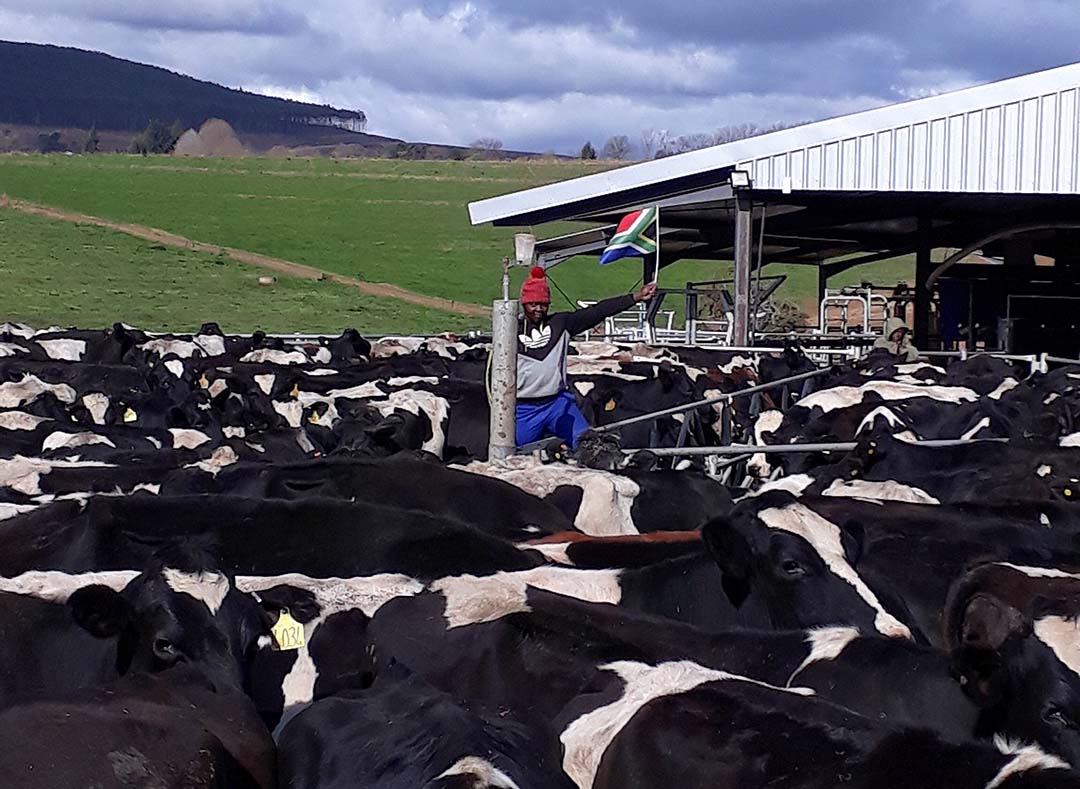
Breeding
“Our heifers are bred once with AI and then we use a couple of bulls to clean up. AI is solely used in the milking herd,” he said.
Paul and Sarah have 43 workers on the farm looking after the dairy herd, citrus fruit orchards and the forest. These workers are supplied by 2 local indunas, which are local tribal chiefs.
“Pasture makes up the bulk of our ration,” Paul states. “We feed additional silage in winter and a concentrate ration from De Heus in the parlour.”
“The concentrate ration is fed on an individual cow basis which we manage with the DeLaval Alpro software depending on how much milk each cow produces. Extra hay and reject citrus fruit is also fed to the cows in the winter. Silage is fed out of tyre feeders in the fields. Aside from a computerised parlour, we run a relatively simple system here on our farm.”
Dairy herd expansion
Expanding the herd is the main goal Paul and Sarah are pursuing, but there are a few challenges unique to South African farming systems.
Paul says: “I would like to grow the herd to around 500 to 600 cows milking on our existing platform and then possibly add additional irrigated area. Then I would fix our citrus trees to keep the diversity, and the timber sector will just keep plodding along.”
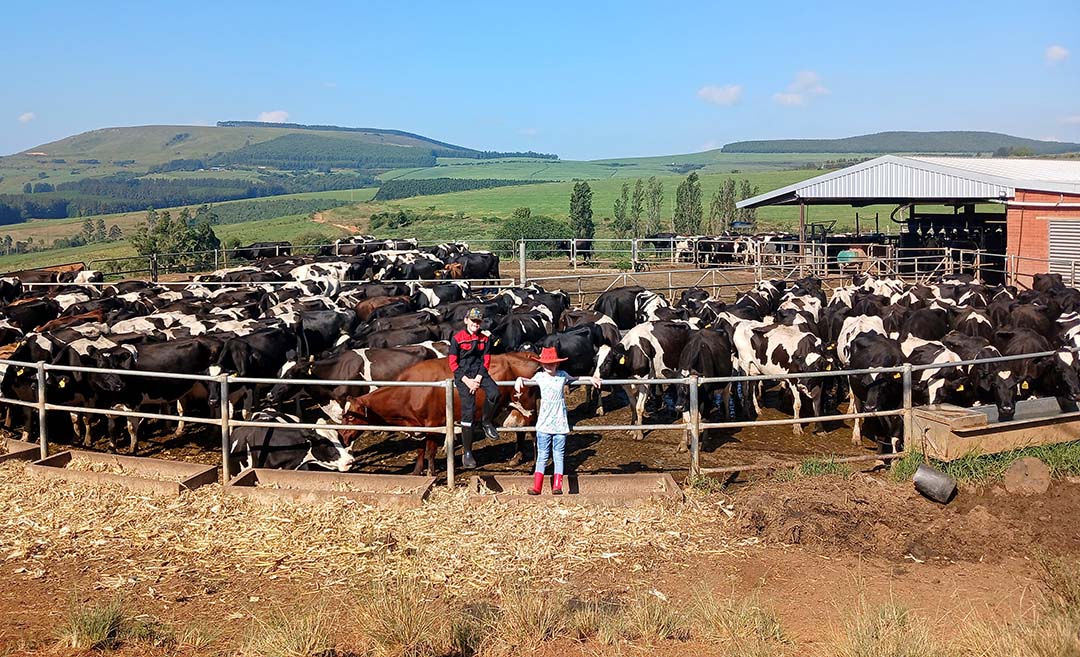
Problems for South African farmers
“There are so many problems associated with farming here. For most South African livestock farmers, the tickborne disease is a huge problem, and for us possibly even bigger as we farm in a warmer area than many others,” Paul explains. “Creative use of dipping ingredients is helping us keep our cows relatively tick-free. We have also discovered a liver tonic that is helping our cows improve their immunity and renewing their livers, which makes for healthier cows.”
Water quality has also been an issue, but Paul and Sarah have found aerating the water with venturis has helped significantly.
“Theft is also another major problem in Africa. We have had maize stolen, and the copper wiring at our irrigation pumps. Security is something we have to keep working at, though a good relationship with staff who live on our farm helps immensely in this regard. Our government does not support farmers in any way. It’s not something we think about often as we just get on with it ourselves. There are little or no import tariffs here, as in many other countries, or farmer subsidies, which hurts us too,” he said.



